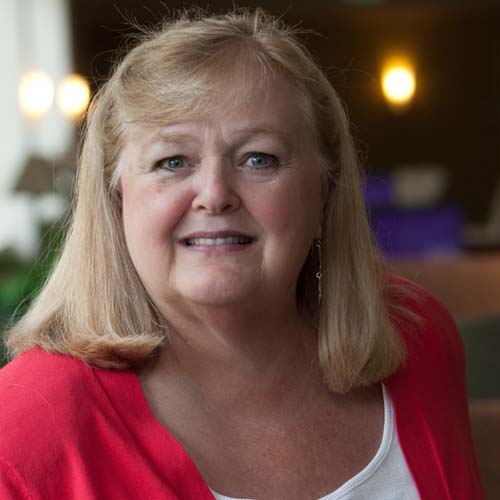Sign Language Interpreters: Breaking Down Silos Through Reflective Practice
Sign language interpreters often are not equipped, initially or indefinitely, with the tools to improve their work. Anna Witter-Merithew encourages us to take steps toward reflective practice as a way to more deeply see our work in the service of growth.
Most of us went to work as sign language interpreters before we were ready. Whether it was insufficient skill sets, a lack of maturity and self-awareness, or some other gap, we started working without being fully equipped to handle all that being a professional interpreter requires. This lack of readiness is often compounded by a lack of formal induction into the field. There are not consistent systems that ensure that our transition from learning to interpret and working as an interpreter is supervised and monitored.
Professional Isolation
This lack of consistent supervised induction and support often leads to isolation—few of us have the luxury of working with another interpreter on a daily basis. Many interpreter assignments are still filled by the lone practitioner. And, few of us have a direct supervisor who is present when we are working, who understands interpreting at a deep level, and offers support and assistance. We often function as silos—each doing our own thing without connection to others who do our work for long periods of time.
There are many consequences to professional isolation, including job dissatisfaction, burn-out, distrust, fear and frustration. It can lead to feeling defensive and even hostile. In some instances, it can lead to disrespectful treatment of consumers and one another. When it continues for a long period of time, we may find ourselves almost crippled– numbing out in order to survive the pressures of our work. As a result, we become less willing to open up our work to one another and to seek input into how to improve. This is a tragic state for any of us. Our value for one another and the work we do requires us to find creative solutions to this isolation.
Reflective Practice– An Alternative
A process known as reflective practice is increasingly used as an alternative for overcoming professional isolation and encouraging collaborative discussions that help identify ways of improving and promoting best practices within the sign language interpreting profession. Reflective practice is defined in many different ways in the literature. Essentially it refers to the process of examining critical incidents that occur within our work to gain a deeper understanding of what they mean for what we do.
As mentioned in the post entitled Sign Language Interpreters: Are Acts of Omission a Failure of Duty?, reflective practice is an important part of the due diligence cycle. The due diligence cycle involves assessing risks and consequences associated with our work. Having the ability to think about our work as sign language interpreters both individually and with one another—to analyze what happened, why it happened, and what we might do differently under similar circumstances.
Reflective practice allows us to analyze our interpreting experiences for the purpose of gaining a deeper understanding of ourselves and the nature of our work. This process is important to our well-being as practitioners. It is a method of self-evaluation and is a way of improving performance in professional tasks. By reflecting on how we can improve our work, we increase our awareness of what we are doing and constantly learn and grow as professionals. As well, it is an excellent tool for overcoming our isolation and enabling us to benefit from the shared listening and support of other practitioners.
Barriers to Reflective Practice
Time
There are barriers to reflective practice. The most obvious is time. Carving out time in a schedule that is often already over-booked is difficult. As is the case with all worthwhile pursuits, establishing priorities is essential and often something has to go in order to make the time for something new. And reflective practice requires an investment of time. If it can be viewed as time invested in self-care and well-being, it is much easier to set the time as a priority.
Proximity
Another barrier to reflective practice is proximity to other practitioners. There are many of us who live in rural areas of the United States and do not have ready access to other interpreters. Even those of us who live in large metropolitan areas that are spread out may find getting to one another difficult. Fortunately, technology allows us to connect from remote locations. As has been discussed elsewhere on the Street Leverage site, the use of social media like ooVoo, Skype and other similar programs allows us to connect visually and/or auditorially with one another—some of these tools allowing for up to six individuals to connect simultaneously.
Motivation
A lack of motivation is another barrier to reflective practice. Depending on the degree of burn-out or frustration we are experiencing, we may just not have the interest or desire to take the leap of faith that is required to engage in what can be an intense process at times. And, as Aaron Brace indicated in responding to the post entitled Sign Language Interpreters: Stepping out of the Shadows of Invisibility, reflecting is not suited to everyone. This is where individual decision and intention come into play. Certainly, moving into the promise of greater job satisfaction and collegiality is a better alternative than remaining in a state of burn-out. As well, reflective practice can be viewed as one skill to possess among an array of skills geared towards self-care and well-being.
Reflective thinking is a learned process acquired over time. Given the importance of our work as sign language interpreters, and the potential for harm when it is not done responsibly, learning the art of reflection is a worthwhile commitment.
Forming the Habit of Reflective Practice
There are some strategies that are useful in forming the habit of reflective practice.
1. Keep a diary or daily journal of significant events during your work as an interpreter. The journal can be a great source of reflection as we consider the challenges we experienced and what stood out as a result of our experience.
2. Engage in reflective discussion of significant experiences with professional colleagues. As we continue to explore topics of role, responsibility and duty, we are our best resource. There is much support and learning that can be gained by seeking out the feedback of valued colleagues with whom we can openly reflect on our experiences. When reflection is done in a collaborative and respectful fashion, we can take the feedback seriously and use it to improve our performance. Sometimes this process is referred to as case conferencing or observation-supervision. It allows a trusted group of professionals to explore their experiences towards finding solutions to difficult issues and reinforcing best practices.
3. Engage in reflective discussions of significant experiences with Deaf consumers. It is important to find opportunities to talk with Deaf consumers about our work as sign language interpreters and to ask them to help us consider the implications of role implementation for their experiences. What are the implications of our acts of commission and omission for their goals? Their insight is essential in helping us to continue to define our vision for the field and how we will continue to evolve and grow.
4. Use a model of reflection. There are many models that can be used. An easy, but effective model is one that involves three steps—discussing the What, So What, and Now What. Here is how it can work.
a. WHAT? This is the description step in the process. It creates the basis for the reflection. What happened during the assignment? What was the situation? Who was involved? What were the roles of the various participants? How did I approach my role? What is a general thesis and preview of your reflection? This is the description step in the process.
b. SO WHAT? This is step when we examine and analyze the What. It should occur on two levels. So what does this all mean in terms of the outcomes of the assignment? So what does this mean to me personally? What was the significance of the assignment? What did I learn that enhances my understanding of the consumers’ experience? What did I learn that is reflected or is relevant to my professional experiences? What skills and knowledge did I use/apply? What did it mean to me personally? What are my negative and positive feelings about the experience, the people, and the experience? What instances did I encounter that “opened my eyes”? What do I think about now that I didn’t think about prior to this experience? How can I use or evaluate this information?
c. NOW WHAT? This step allows us to contemplate what we would do differently next time or what practices we want to replicate, expand upon and preserve. What impact might my actions and behavior have on my lifelong learning process? What impact did my experience have on my work as a sign language interpreter? What impact did my experience have on how I perceive the importance of behaving as transparently as possible when interpreting? What insights did I gain that might assist me in my work as an interpreter? How does this experience compliment or contrast with what I have learned previously about interpreting?
Let’s Get Started
Certainly, getting started will require a deeper understanding of what is involved in the process of reflective practice. There are some great resources available to help sign language interpreters learn more about it. Reading articles by Robyn Dean and Robert Pollard relating to the application of Demand-Control Schema to observation-supervision activities will prove very helpful. Check out their list of publications on this website.
Also, Christopher Knight and Sabina Wilford have designed a workshop on case conferencing for sign language interpreters. They published a handout on this topic in the 2005 RID convention handout book that is worth reviewing. As well, go to your favorite search engine and enter the phrase reflective practice and you will access a wealth of publications and sites discussing the process. It is a particularly valued practice in the healthcare, mental health and teaching fields. And, check in with your local and state chapter of the RID to see what communities of inquiry or support groups might already exist.
We Are Our Best Resource
Where communities of inquiry do not currently exist, ask your RID leaders how you can contribute to starting one. And, of course, using the forum provided us here at Street Leverage is another option. Perhaps there are those of you who are currently engaged in reflective practice processes who can share with us how you got started, how the process works, and what are the associated benefits. We truly are our best resource and have so much to offer one another!













